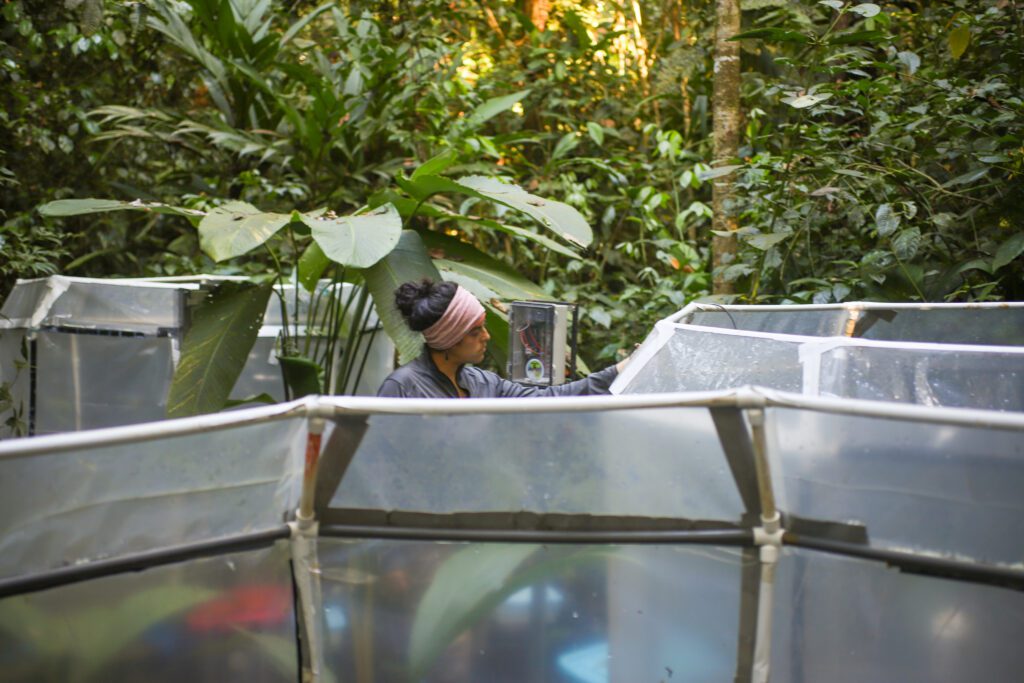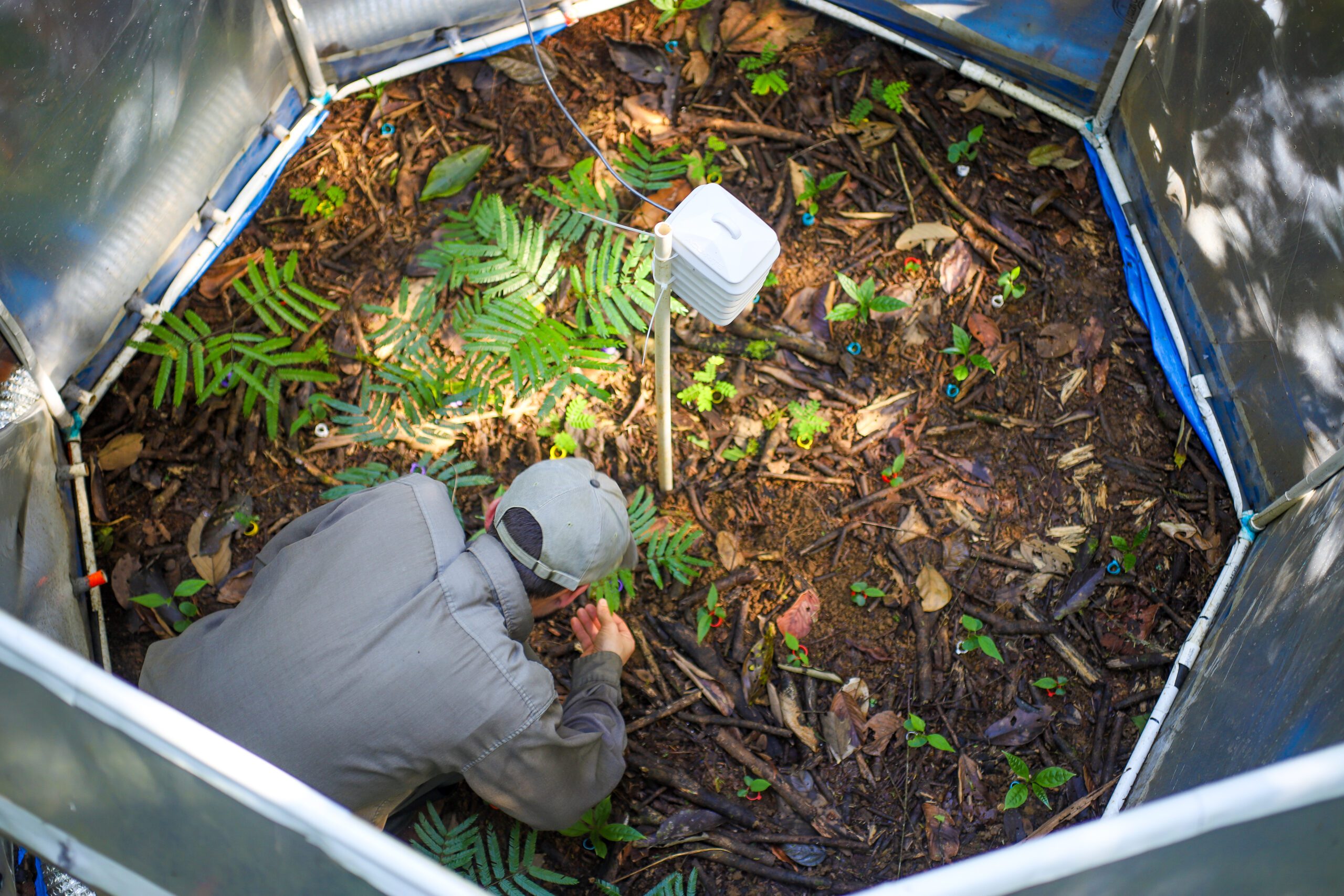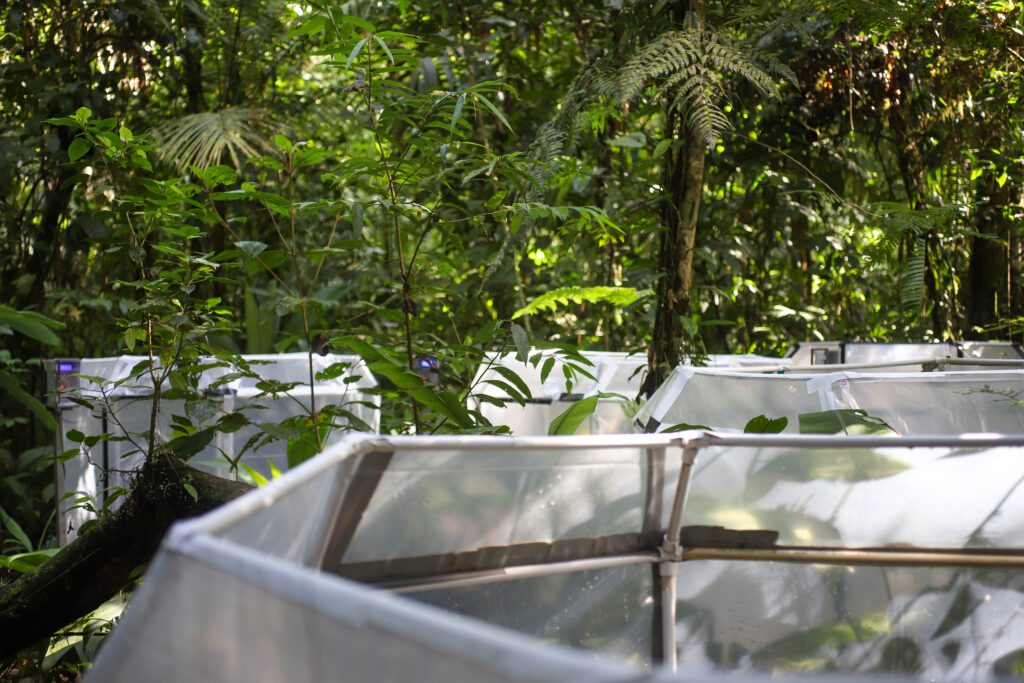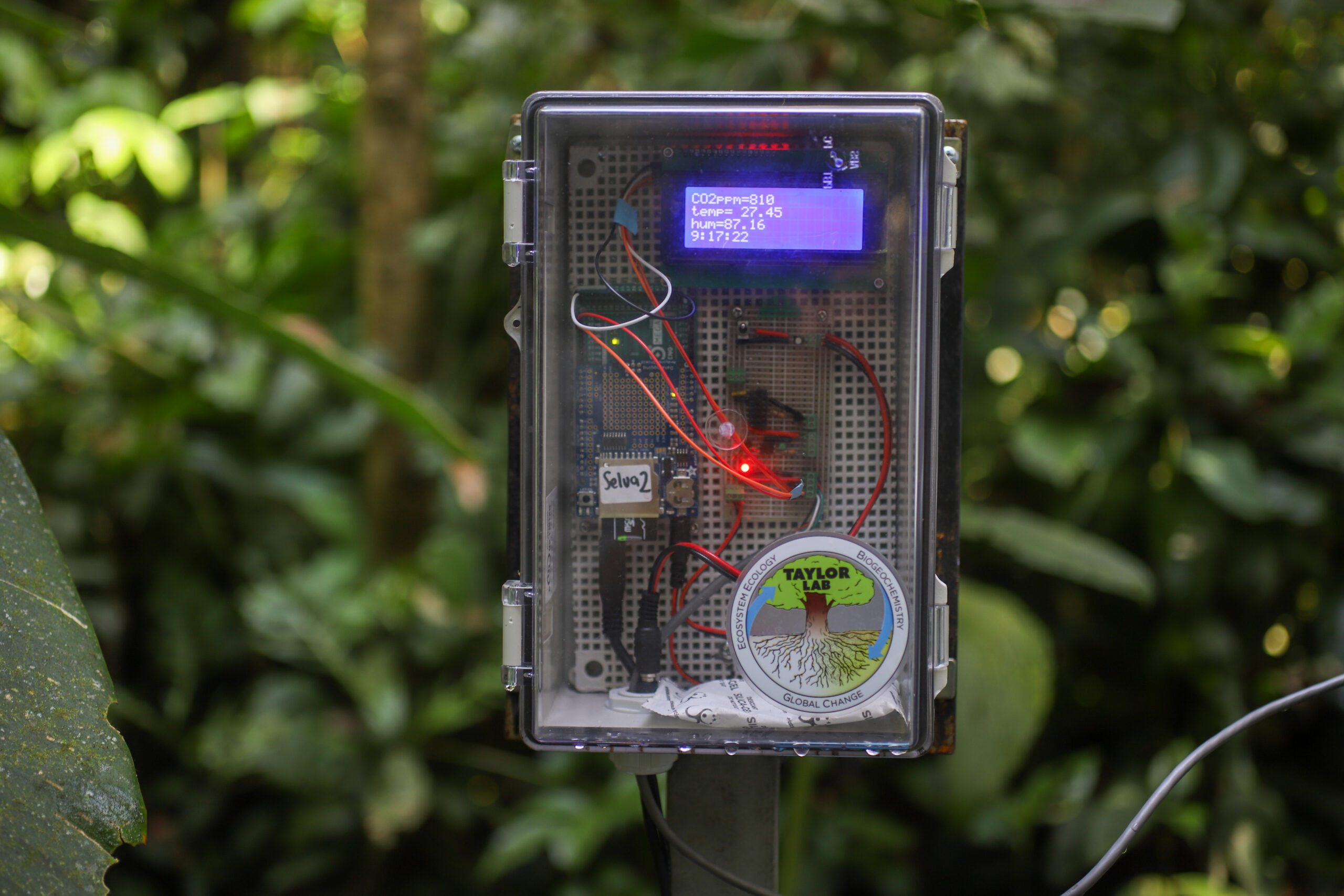Rising CO2 and Tropical Forests
Tropical forests are critical carbon sinks, but how these forests will respond to increasing levels of carbon dioxide (CO2) in the atmosphere is not well understood. Ben Taylor, Assistant Professor of Organismic and Evolutionary Biology at Harvard University set out to change that.
Taylor and postdoctoral fellow, Dr. Cecilia Prada-Cordero, have just begun a new, first-of-its-kind experiment examining the impacts of elevated CO2 conditions on the growth of tropical tree species in situ, or in their intact, “natural” conditions in the forest. The project is being conducted at the La Selva Biological Research Station in Costa Rica where the team has just completed the construction of eight custom-designed open-top CO2 chambers.

“These trees make up most of our lowland tropical forests around the globe, they drive the majority of primary productivity, and have a disproportionate impact on global carbon cycles, global water cycles, nutrient cycles, and biodiversity,” Taylor said and added, “Understanding how these types of forests are going to be impacted by and respond to elevated CO2 is essential to predicting their capacity to mitigate climate change.”
Photosynthesizing organisms, such as trees and grasses, capture carbon from the atmosphere and use it to build plant tissues or to store in the soil around their roots. Forest ecosystems are among the most important natural resources on Earth and have been evolving for millennia under natural fluctuations in atmospheric CO2 conditions. Current levels of CO2, however, are drastically higher than they were just one hundred years ago.
Evidence suggests that the higher concentration of CO2 causes a “CO2 fertilization effect”— a phenomenon that leads to increased photosynthesis and makes plants grow bigger. But this evidence stems from experiments conducted primarily in the temperate regions of the world, leaving the future responses of tropical rainforests to rising CO2 largely unknown.

“While plants have the potential to grow bigger with more CO2 available to them, the ability to realize this potential depends on whether the plant can acquire the extra nutrients it needs to fuel this growth,” Taylor explains. “To collect these nutrients, most plants form a mutually beneficial, or “mutualistic” partnership with one of three types of soil microbes.”
Each of the three microbial varieties offers plants a different strategy for nutrient acquisition and carbon storage. Many tree species in the temperate regions of the world, where most elevated CO2 experiments are conducted, form partnerships with ectomycorrhizal fungi, a fungus that sits on the outside of plant’s roots and help them to collect nitrogen from the soil. However, most forests in the tropics are dominated by plants that form partnerships with arbuscular mycorrhizal fungi, which live inside the plant root and predominantly supply phosphorous to the plant. The third type of partnership is formed with nitrogen fixing bacteria, which sequester nitrogen from the air and are commonly associated with legumes (trees in the same plant family as soy or pea plants).
Thus, the question becomes: Does one microbial partnership or another provide a competitive advantage under elevated CO2 conditions? Right now, we don’t know. This is why it was so imperative that this team conduct their research in Costa Rica. “There is a gap in our understanding of how tropical forests will respond to higher CO2 concentrations and the role of microbial partnerships because so little experimentation has been done in the tropics,” Prada-Cordero explained. “The scientific community is still unclear on how tropical forests — one of the most important and productive ecosystems in the world — will respond to rising CO2 levels,” Taylor stressed.

Taylor and Prada-Cordero’s project uses open-top CO2 chambers. Inside each chamber the researchers will plant six native species of woody seedlings. Each species was carefully selected for the unique plant-microbe partnerships it has evolved. The chambers allow the researchers to artificially elevate carbon dioxide levels, mimicking near-future atmospheric CO2 conditions. Each chamber is equipped with a ventilation system that releases CO2 into the semi-enclosed space and is outfitted with a suite of sensors to monitor environmental factors, regulate CO2 levels in the chambers, and record data.
Prada-Cordero, a field ecologist by training, spent the last six months building and programming each sensor used in the project. “The weather in the tropics is so humid and wet, that it was a challenge to weather-proof each device — not to mention the insects and other curious animals that love to eat them!” Prada-Cordero said.

Over the next six months, Prada-Cordero, who is running the on-the-ground operations in Costa Rica, will collect measurements and monitor the saplings as they grow. In late June, researchers will harvest several of the saplings, collecting additional data from “destructive” measurements, while allowing the rest of the saplings to continue to grow. While the CO2 chambers won’t be able to contain the trees into adulthood, the team still expects to gain valuable insights.
“The first few months of a tree’s life in the tropics are critical,” Taylor said. “Competition is high, and very few trees ever make it to the tree canopy.” Prada added: “Since our research will use young trees in their seedling stage, our findings will help lead to more questions and hypotheses about how elevated CO2 will affect trees as they mature.”
Taylor is interested in how plant growth under elevated CO2 conditions varies across the species of trees in the experiment. By understanding their reactions under the controlled conditions, “we can begin to understand what the species composition of future forests could be, how carbon is likely to be stored, and shine light on the role that tropical forests could play in addressing climate change,” Taylor said.
Read more about the Ben Taylor’s research work at the Taylor Lab at Harvard University.
